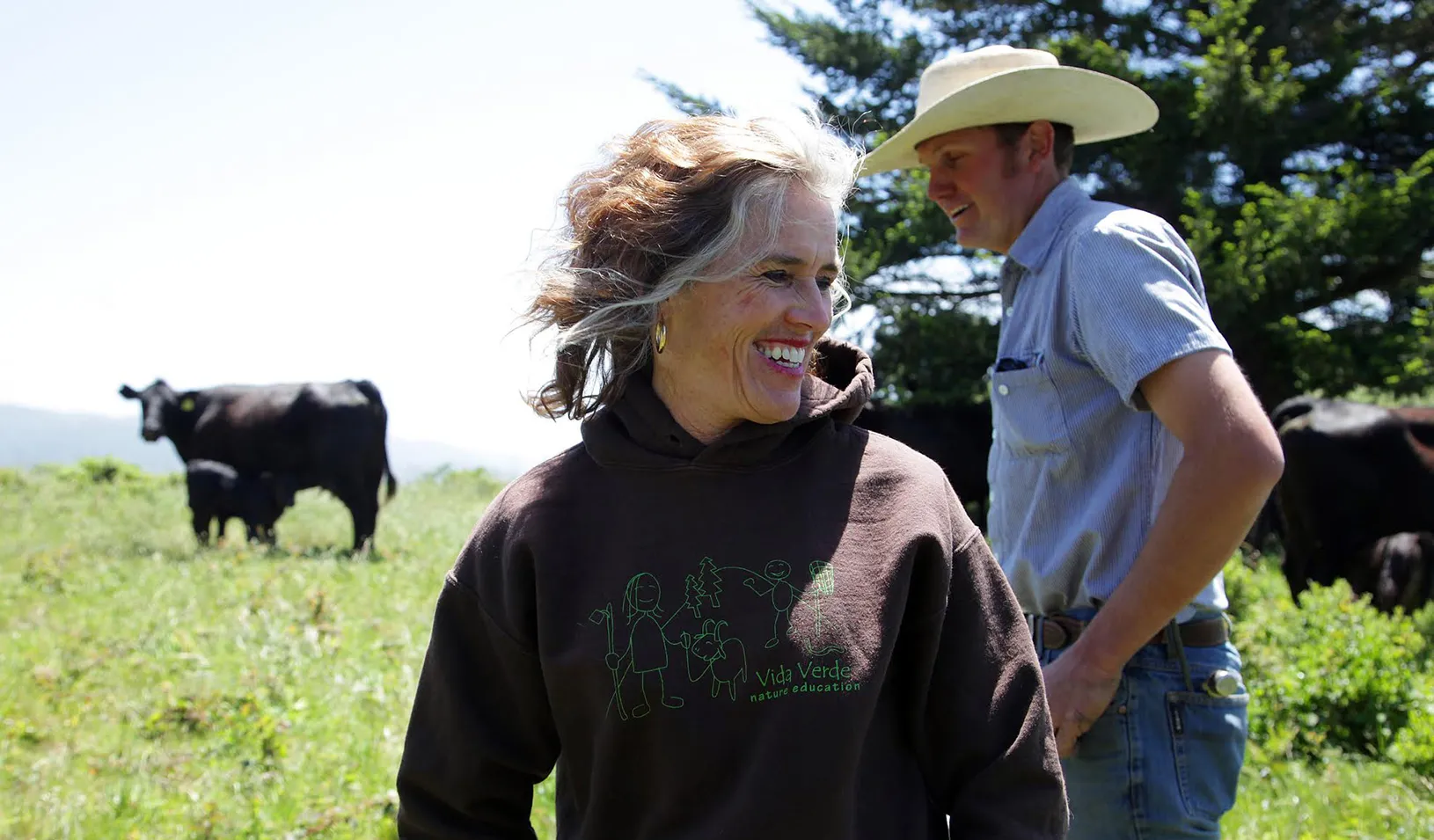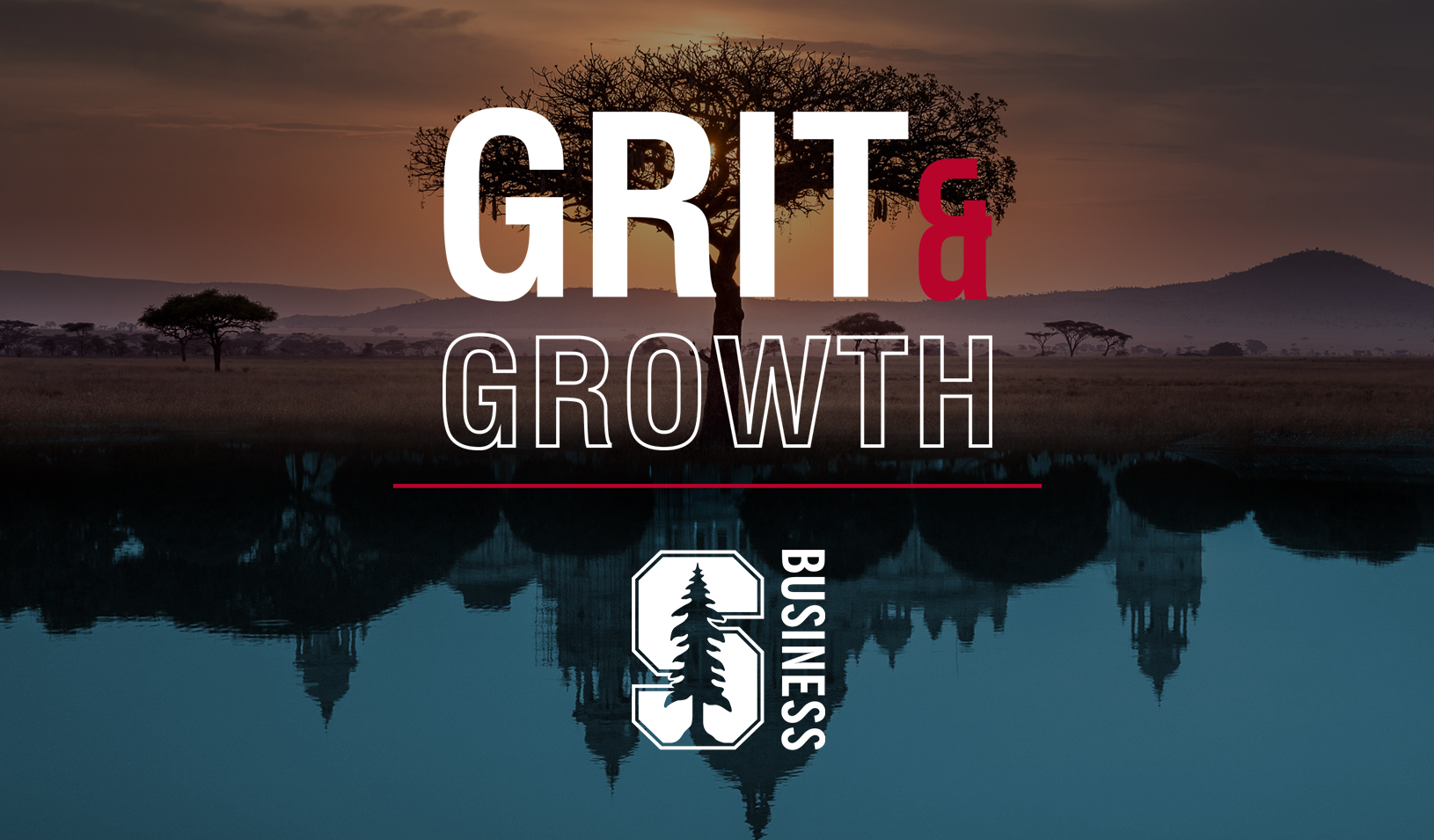Kat Taylor: Changing the Face of Philanthropy
A bank CEO explains what finance, food and climate change have to do with charitable giving.
June 17, 2015

Kat Taylor and ranch manager Jeremiah Stent on the TomKat Ranch, in Pescadero, California. | Jim Wilson/The New York Times/Redux
Kat Taylor sums up the focus of her philanthropic efforts in six words: Good food. Good money. Good energy. That’s why over the last decade, she and her husband, Tom Steyer, have built a sustainable ranch, opened a bank that is mandated to contribute to social justice and the environment, and established an organization “to inspire U.S. politicians to achieve climate stability while restoring prosperity.”
Steyer, the founder and senior managing member of Farallon Capital Management, retired at the end of 2012. He now spends his time as an energy advocate, focusing mostly on the “good energy” side of the equation. In 2013, he formed NextGen Climate, an organization that “acts politically to prevent climate disaster and promote prosperity for all Americans.”
Taylor is co-CEO, and with her husband co-Chair, of Beneficial State Bank, which they founded together in 2007. She devotes most of her time to sustainable agriculture and responsible banking. “Finance matters more to society than society realizes,” she says.
Taylor stood out recently as a panelist at a Finance & Society Conference in Washington, D.C., organized by Anat Admati, a Stanford GSB finance professor. Admati, an author and critic of ineffective banking regulations, says Taylor brings a more nuanced approach than do central bankers and macroeconomists, who often lump all “credit” together and don’t make distinctions between the different kinds of loans that banks and other institutions make. “Kat brought a unique perspective to this panel because she is thoughtful about the broad context of the decisions that banks make and more aware of the full set of stakeholders involved,” says Admati of the conference sponsored by The Institute for New Economic Thinking.
Stanford Business caught up with Taylor after the conference to discuss philanthropy, banking, and sustainable farming.
Multi-Pronged Approach
If Taylor’s brand of philanthropy looks less like charity and more like commerce and politics, that’s on purpose. Her charitable giving spans more than two decades; at first she concentrated on education and cultural causes, donating money directly to organizations. But philanthropy alone, she says, cannot put a dent in the world’s problems unless it’s somehow connected to business and the social compact — and to society’s main institutions.
Over the last decade, she and Steyer, both MBAs from Stanford GSB, have picked three specific areas to focus on, climate, finance, food. And instead of just writing checks, they have created working entities within the three sectors, not only to bring change but to learn more by doing.“We live in these terribly complex, interconnected times. There’s not going to be a silver bullet or single-dimensional approach,” Taylor says.
Banks as Crowdfunders
One of those entities — the bank they founded, which has offices in California, Oregon, and Washington — may seem inconsistent with charitable giving, especially considering the role big banks played in the 2008 financial crisis. But Taylor sees the leverage that the bank business model affords — when it’s done right — as a way to help society. It’s the ultimate form of “crowdfunding,” she says, because depositors can vote with their money by deciding which banks to use.
Financial institutions, of course, cannot survey all of their borrowers to learn how they want their money invested, but depositors can have influence, she says, by directing their money to banks that align with their values.
Their bank services organizations and companies that are “creating the new economy — one that is fully inclusive, racially just, and environmentally sound.” Any profit, when distributed, is funneled back to the bank’s foundation, which is mandated to invest it in the community and environmental causes.
With just over $500 million in assets, Taylor jokes that the bank is a “gnat” compared with traditional banks, some of which measure their asset size beyond a trillion dollars. Community banks, she says, could benefit from more consolidation, noting that one way the 111 community banks in the United States might be able to make a dent in the profits of traditional banks is to hit them where it hurts — credit-card fees. That’s why her bank offers a credit card associated with the likes of the Sierra Club and other causes to give card holders an alternative to credit cards that are aligned with for-profit businesses.
Why Finance Matters
Taylor is trying to address the wider systemic problems in the financial sector too. She argues that conventional banks are relying too heavily on tools like FICO scores, which divide borrowers into broad categories that are not particularly predictive of ability or willingness to repay.
Beneficial State Bank has not eliminated the use of FICO scores but it layers on what she says are more “effective and fair” algorithms. Taylor works with a company that uses detailed analytics to incentivize good borrower behavior and migrate pre-prime borrowers to even better rates and terms.
Once the bank issues them loans, the borrowers are given an opportunity to reduce their interest rates even further when they hit certain milestones, such as making payments on time or taking a class in financial literacy. “The payday model is profitable at the expense of borrowers,” she says, referring to short-term, no-collateral loans that typically carry extremely high application fees and interest rates. “Our joint model is profitable because it creates value for all parties — greater financial health and choices for the customers and a new pool of customers for the bank.”
Why Food?
Like banking, which impacts a large sector of society, food production is related to a wide and inter-related network of issues, such as energy, human health, and the environment. “Food is something that affects everyone, and we can address a lot of systemic problems through the food lens,” Taylor says.
The 2,000-acre TomKat ranch in Pescadero, California, that she owns with Steyer is meant to be a living testing ground for sustainable ranching. The ranch uses sustainable management practices to raise fully grass-fed beef and pasture-raised eggs. The migration of the cattle and other domestic animals there is monitored to assure that the grasslands and coastal brush dominating the landscape of the ranch’s hills and valleys are not depleted. Quite the opposite — through planned grazing, invasive plant species are reduced and the presence of perennial grasses that cut down on soil erosion, retain water, and improve the carbon content and fertility of the soil is increased.
The results are being tracked and evaluated in an effort to create a scientific database of proof that the methods work. Many of the practices are built on the intricate symbiotic partnership of the animals on the ranch, which range from cattle to crickets.
The quality of the soil has improved since the ranch reintroduced this form of animal agriculture in 2006, along with diversity of the plants and wildlife, Taylor says.
The more they work from this system-wide approach, the more they realize that it is the right approach to making change, Taylor says. “Both of us feel like our generation has enormous responsibility, just as we have benefited from prior generations.”
Kat Taylor received her MBA from Stanford GSB in 1986 and Tom Steyer received his in 1983.
For media inquiries, visit the Newsroom.
Explore More

Flashback: Raising Capital in Africa, It’s Not Just About the Money

How the Best Investors Approach Their Mistakes



